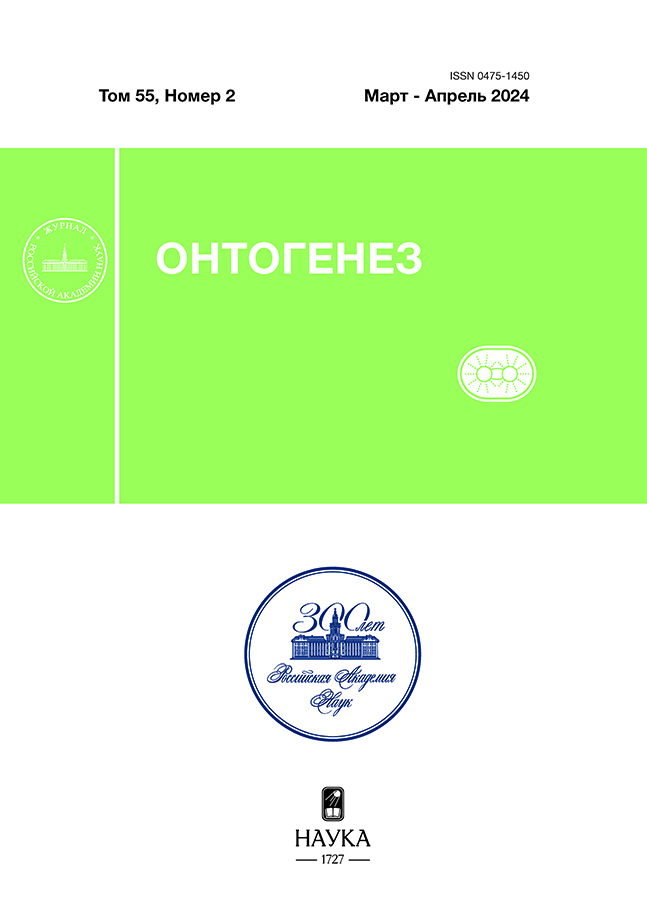Participation of chicken GGAAA repeat in sex differentiation
- 作者: Saifitdinova A.F.1,2, Zhukova A.A.1,3
-
隶属关系:
- Herzen State Pedagogical University of Russia
- St. Petersburg University
- Russian Federal Research Institute of Fisheries and oceanography
- 期: 卷 55, 编号 2 (2024)
- 页面: 47-52
- 栏目: Original study articles
- URL: https://ruspoj.com/0475-1450/article/view/681452
- DOI: https://doi.org/10.31857/S0475145024020015
- EDN: https://elibrary.ru/MDPCTC
- ID: 681452
如何引用文章
详细
Tandem repeating elements that form extended polypurine/polypyrimidine tract sequences have been found in the genomes of various species. Their structural properties bend the DNA helix and cause a transition to non-canonical DNA secondary structures. The modern scientific literature describes many examples of the involvement of such elements in the regulation of gene expression and the formation of alternative transcripts in cells of different types of differentiation (Matos-Rodrigues et al., 2023). Previously, we described the (GGAAA)n repeating element of chicken (Gallus gallus domesticus), which is predominantly localized on the sex chromosome W and makes up about 1% of the female genome (Komissarov et al., 2018). Here we describe the localization peculiarities of this tandem repeat in the chicken genome within autosomes and the sex chromosome Z. The study identified a number of genes carrying tandemly repeated (GGAAA)n elements within non-coding transcribed regulatory regions that can influence expression intensity and the formation of alternative transcripts. Functional characterization of genes carrying stacks of (GGAAA)n allowed us to suggest the involvement of these tandem repeats in regulating the differential activity of genes important for the development of sexual dimorphism traits in chicken.
全文:
作者简介
A. Saifitdinova
Herzen State Pedagogical University of Russia; St. Petersburg University
编辑信件的主要联系方式.
Email: saifitdinova@mail.ru
俄罗斯联邦, St. Petersburg, 191186; St. Petersburg, 199034
A. Zhukova
Herzen State Pedagogical University of Russia; Russian Federal Research Institute of Fisheries and oceanography
Email: saifitdinova@mail.ru
Saint Petersburg branch
俄罗斯联邦, St. Petersburg, 191186; St. Petersburg, 199053参考
- Bellott D.W., Skaletsky H., Cho T.-J. et al. Avian W and mammalian Y chromosomes convergently retained dosage-sensitive regulators // Nature Genetics. 2017. V. 49. № 387. P. 94.
- Komissarov A.S., Galkina S.A., Koshel E.I. et al. New high copy tandem repeat in the content of the chicken W chromosome // Chromosoma. 2018. V. 127. № 1. P. 73–83.
- Li Z., Zheng M., Abdalla B.A., Zhang Z. et al. Genome-wide association study of aggressive behaviour in chicken // Scientific reports. 2016. V. 6. № . 30981.
- Lovell P.V., Huizinga N.A., Friedrich S.R. The constitutive differential transcriptome of a brain circuit for vocal learning // BMC Genomics. 2018. V. 19. № 1.
- Matos-Rodrigues G., Hisey J.A., Nussenzweig A. et al. Detection of alternative DNA structures and its implications for human disease // Molecular Cell. 2023. V. 83. № 20. P. 3622–3641.
- Maroteaux L., Heilig R., Dupret D. et al. Repetitive satellite-like sequences are present within or upstream from 3 avian protein-coding genes // Nucleic Acids Research. 1983. V. 11. P. 1227–1243.
- Wada K., Sakaguchi H., Jarvis E. D. et al. Differential expression of glutamate receptors in avian neural pathways for learned vocalization // The Journal of Comparative Neurology. 2004. V. 476. P. 44–64.
- Zopf D., Dineva B., Betz H., Gundelfinger E.D. Isolation of the chicken middle-molecular weight neurofilament (NF-M) gene and characterization of its promoter // Nucleic Acids Research. 1990. V. 18. № 3. P. 521–529.
补充文件









